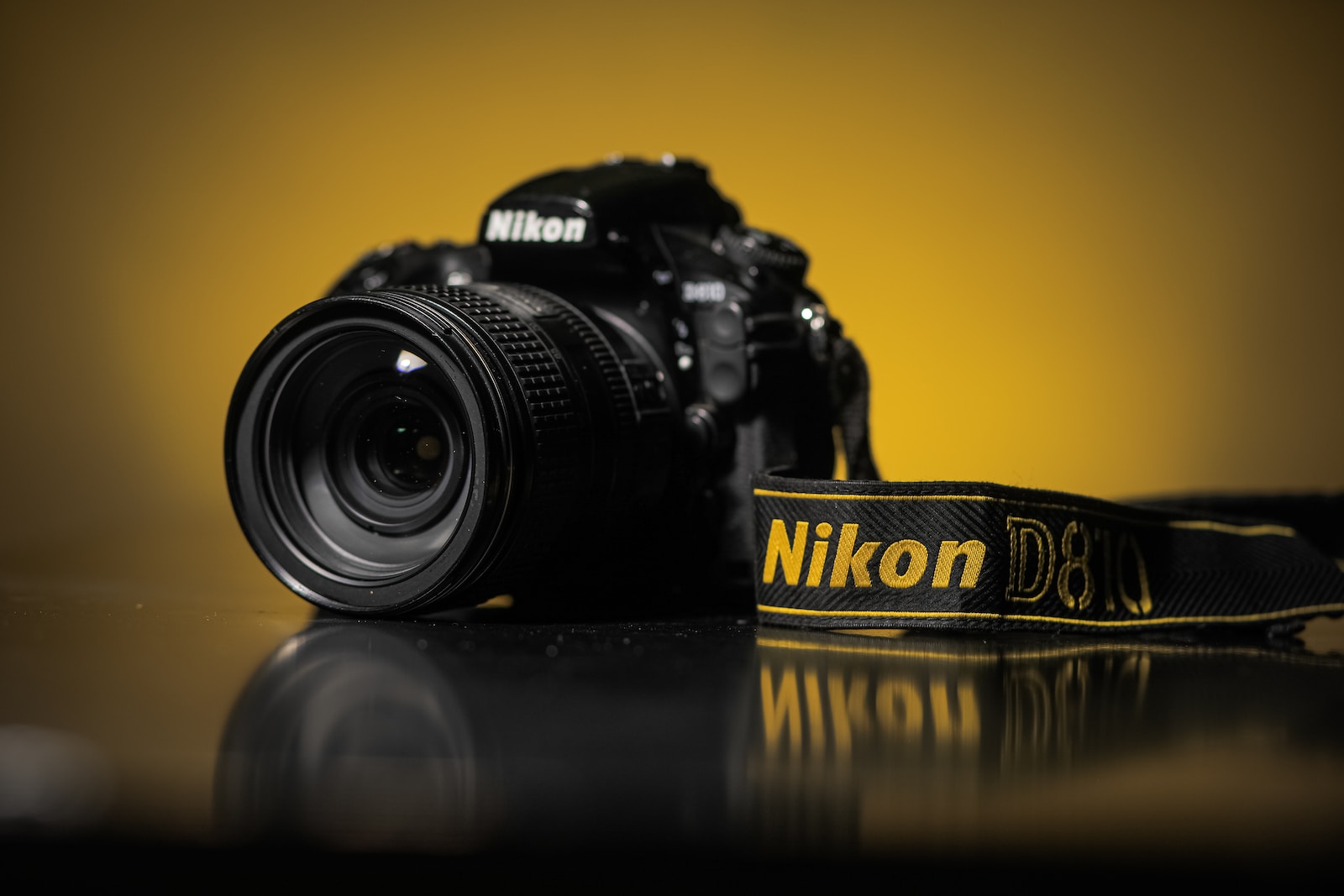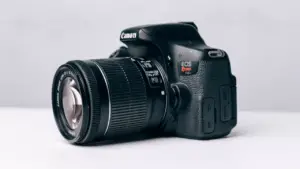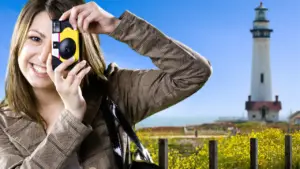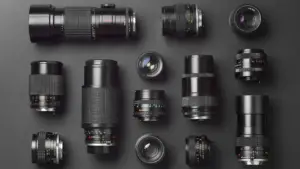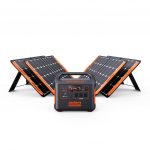In portrait photography, the right lens can make all the difference in capturing stunning, professional-looking images. While any lens can technically be used for portraiture, a specialized portrait lens can elevate your photography to the next level.
Portrait lenses are designed to capture flattering portraits with beautiful bokeh, crisp focus, and minimal distortion. They typically have a wider aperture, allowing you to create a shallow depth of field that blurs the background and draws attention to your subject.
In this article, we’ll discuss the factors you should consider when selecting the best lenses for portrait photography and recommend some of the best portrait lenses for different budgets and camera types. Whether you’re a professional photographer or just getting started, selecting the right lens is crucial for capturing beautiful portraits you’ll be proud to share.
Table of Contents
Factors to Consider When Choosing a Portrait Lens
When selecting the best lenses for portrait photography, several factors must be considered to ensure you capture beautiful and professional-looking images. Here are some of the most important factors:
Focal length and perspective: The focal length of a lens determines its angle of view and the perspective it creates. A longer focal length lens, such as an 85mm or 135mm, creates a narrower field of view and a more flattering perspective for portraits. Wide-angle lenses can distort facial features, while telephoto lenses compress features and blur the background.
Aperture and depth of field: The aperture of a lens determines how much light enters the camera and how shallow or deep the depth of field is. A wider aperture, such as f/1.8 or f/1.4, allows more light and creates a shallower depth of field, which can blur the background and draw attention to your subject.
Bokeh and background blur: The quality of the background blur, or bokeh, can be just as important as the sharpness of your subject. A lens with a wide aperture and rounded aperture blades will create a smooth, creamy bokeh that can enhance the look of your portraits.
Image stabilization and low light performance: If you plan on shooting in low light or without a tripod, a lens with image stabilization can help reduce camera shake and produce sharper images. Look for lenses with built-in image stabilization, or consider using a camera body with in-body stabilization.
Autofocus speed and accuracy: Your lens’s autofocus can impact your ability to capture sharp and in-focus portraits, particularly if your subject is moving. Look for lenses with fast and accurate autofocus systems, especially if you plan on shooting portraits of children or pets.
These factors can help you choose the best lens for your portrait photography needs. Keep them in mind as you evaluate different lenses and decide which will help you achieve your desired look and feel for your portraits.
Best portrait lenses for DSLRs
Canon EF 85mm f/1.2L II USM:
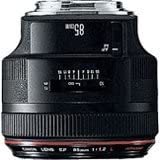
The Canon EF 85mm f/1.2L II USM is a high-quality portrait lens popular among professional photographers. It features a wide aperture of f/1.2, allowing you to capture stunning portraits with shallow depth of field and beautiful bokeh. The lens is constructed with high-quality glass, and its Ultrasonic Motor (USM) delivers fast and quiet autofocus.
Pros:
- The wide aperture of f/1.2 for beautiful bokeh
- High-quality construction and image quality
- Fast and quiet autofocus
- Excellent for low-light photography
Cons:
- Expensive
- Heavy and bulky compared to other lenses
- Manual focus can be challenging due to the shallow depth of field
Nikon AF-S NIKKOR 85mm f/1.4G:
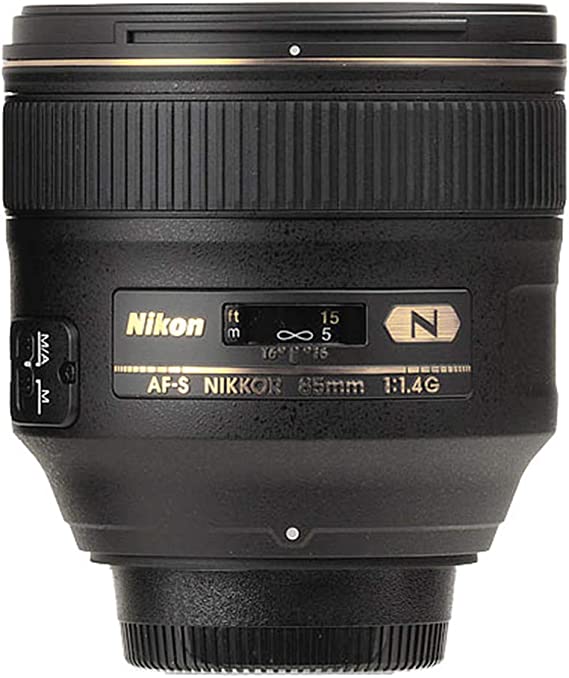
The Nikon AF-S NIKKOR 85mm f/1.4G is a high-quality portrait lens designed for Nikon DSLRs. It features a wide aperture of f/1.4, which allows you to create a shallow depth of field and capture beautiful portraits with soft backgrounds. The lens is constructed with high-quality glass and features a Silent Wave Motor (SWM) for fast and quiet autofocus.
Pros:
- The wide aperture of f/1.4 for beautiful bokeh
- High-quality construction and image quality
- Fast and quiet autofocus
- Excellent for low-light photography
Cons:
- Expensive
- Heavy and bulky compared to other lenses
- Some users report autofocus accuracy issues
Tamron SP 85mm f/1.8 Di VC USD
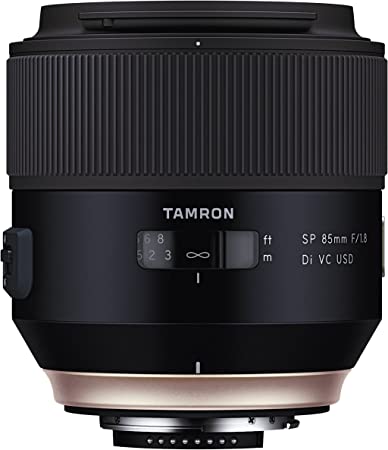
The Tamron SP 85mm f/1.8 Di VC USD is a high-quality portrait lens compatible with Canon and Nikon DSLRs. It features a wide aperture of f/1.8, allowing you to create beautiful portraits with shallow depth of field and bokeh. The lens also features Tamron’s Vibration Compensation (VC) system, which helps to reduce camera shake and produce sharper images.
Pros:
- The wide aperture of f/1.8 for beautiful bokeh
- Compatible with both Canon and Nikon DSLRs
- Vibration Compensation (VC) system for sharper images
- Relatively affordable compared to other lenses
Cons:
- Autofocus can be slower compared to other lenses
- Some users report vignetting at wider apertures
- Bokeh quality is not as smooth as some other lenses
Sigma 85mm f/1.4 DG HSM Art
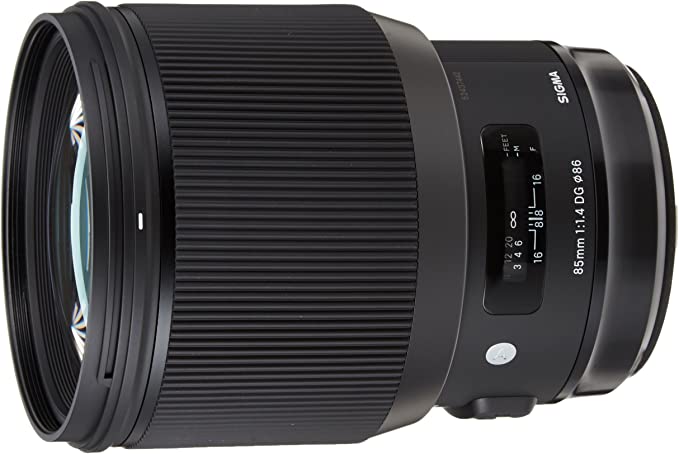
The Sigma 85mm f/1.4 DG HSM Art is a high-quality portrait lens compatible with Canon and Nikon DSLRs. It features a wide aperture of f/1.4, allowing you to create beautiful portraits with shallow depth of field and bokeh. The lens is constructed with high-quality glass and features Sigma’s Hyper Sonic Motor (HSM) for fast and quiet autofocus.
Pros:
- The wide aperture of f/1.4 for beautiful bokeh
- High-quality construction and image quality
- Fast and quiet autofocus
- Compatible with both Canon and Nikon DSLRs
Cons:
- Expensive compared to other lenses
- Heavy and bulky compared to other lenses
- Some users report autofocus accuracy issues
Canon EF 50mm f/1.2L USM
The Canon EF 50mm f/1.2L USM is a high-quality portrait lens compatible with Canon DSLRs. It features a wide aperture of f/1.2, allowing you to create beautiful portraits with shallow depth of field and bokeh. The lens is constructed with high-quality glass and features an Ultrasonic Motor (USM) for fast and quiet autofocus.
Pros:
- The wide aperture of f/1.2 for beautiful bokeh
- High-quality construction and image quality
- Fast and quiet autofocus
- Lightweight and compact
Cons:
- Expensive compared to other 50mm lenses
- Some users report chromatic aberration at wider apertures
- Autofocus can be challenging in low-light situations
Nikon AF-S NIKKOR 50mm f/1.4G:
The Nikon AF-S NIKKOR 50mm f/1.4G is a high-quality portrait lens designed for Nikon DSLRs. It features a wide aperture of f/1.4, allowing you to create beautiful portraits with shallow depth of field and bokeh. The lens is constructed with high-quality glass and features a Silent Wave Motor (SWM) for fast and quiet autofocus.
Pros:
- The wide aperture of f/1.4 for beautiful bokeh
- High-quality construction and image quality
- Fast and quiet autofocus
- Lightweight and compact
Cons:
- Expensive compared to other 50mm lenses
- Some users report softness at wider apertures
- Autofocus can be challenging in low-light situations
Tamron SP 45mm f/1.8 Di VC USD:
The Tamron SP 45mm f/1.8 Di VC USD is a high-quality portrait lens compatible with Canon and Nikon DSLRs. It features a wide aperture of f/1.8, allowing you to create beautiful portraits with shallow depth of field and bokeh. The lens also features Tamron’s Vibration Compensation (VC) system, which helps to reduce camera shake and produce sharper images.
Pros:
- The wide aperture of f/1.8 for beautiful bokeh
- Compatible with both Canon and Nikon DSLRs
- Vibration Compensation (VC) system for sharper images
- Relatively affordable compared to other lenses
Cons:
- Autofocus can be slower compared to other lenses
- Some users report distortion at wider apertures
- Bokeh quality is not as smooth as some other lenses
Sigma 50mm f/1.4 DG HSM Art:
The Sigma 50mm f/1.4 DG HSM Art is a high-quality portrait lens compatible with Canon and Nikon DSLRs. It features a wide aperture of f/1.4, allowing you to create beautiful portraits with shallow depth of field and bokeh. The lens is constructed with high-quality glass and features Sigma’s Hyper Sonic Motor (HSM) for fast and quiet autofocus.
Pros:
- The wide aperture of f/1.4 for beautiful bokeh
- High-quality construction and image quality
- Fast and quiet autofocus
- Compatible with both Canon and Nikon DSLRs
Cons:
- Expensive compared to other 50mm lenses
- Some users report autofocus accuracy issues
- Autofocus can be challenging in low-light situations
The Canon EF 85mm f/1.2L II USM and the Nikon AF-S NIKKOR 85mm f/1.4G are both top-of-the-line portrait lenses with wide apertures and excellent image quality, but they come with a high price tag. The Tamron SP 85mm f/1.8 Di VC USD and the Sigma 85mm f/1.4 DG HSM Art offer similar quality at a slightly lower price point but may have slower autofocus or other minor issues.
For those looking for a more affordable option, the Canon EF 50mm f/1.2L USM and the Nikon AF-S NIKKOR 50mm f/1.4G are excellent choices with wide apertures and high-quality construction but may have some minor issues with autofocus or image softness.
The Tamron SP 45mm f/1.8 Di VC USD and Sigma 50mm f/1.4 DG HSM Art offer even more affordable options with wide apertures and good image quality but may have some drawbacks, such as slower autofocus or distortion at wider apertures.
Best Portrait Lenses for Mirrorless Cameras
Regarding portrait lenses for mirrorless cameras, there are a few standout options to consider. Here are some of the best portrait lenses for mirrorless cameras:
Sony FE 85mm f/1.4 GM: This lens is considered one of the best portrait lenses for Sony full-frame mirrorless cameras. It offers a wide aperture of f/1.4 for beautiful bokeh, low-light performance, and excellent sharpness and autofocus speed. Its only downside is its price, which is relatively high.
Fujifilm XF 56mm f/1.2 R: Fujifilm’s XF 56mm f/1.2 R lens is popular for Fujifilm X-Series cameras. It has a fast maximum aperture of f/1.2 for great bokeh and low-light performance. Its image quality is excellent, with sharpness and detail across the frame. However, its autofocus can be slow in some situations.
Olympus M.Zuiko Digital ED 45mm f/1.2 Pro- This lens is designed for Olympus Micro Four Thirds cameras. It offers a focal length equivalent to 90mm in full-frame terms. It has a fast f/1.2 maximum aperture for beautiful bokeh and low-light performance, excellent sharpness, and autofocus. Its only downside is its relatively high price.
Panasonic Leica DG Nocticron 42.5mm f/1.2 ASPH Power OIS – This lens is designed for Panasonic Micro Four Thirds cameras and offers a focal length equivalent to 85mm in full-frame terms. It has a fast f/1.2 maximum aperture for beautiful bokeh and low-light performance, excellent sharpness, and autofocus. Its only downside is its relatively high price.
Sony FE 50mm f/1.8 – This lens is a budget option for Sony full-frame mirrorless cameras. It has a fast maximum aperture of f/1.8 for good low-light performance and decent sharpness. Its autofocus is fast and accurate, but it does not offer the same level of bokeh as some of the other lenses on this list.
Overall, these lenses offer a range of options for portrait photography on mirrorless cameras. Consider factors such as focal length, aperture, image quality, autofocus speed and accuracy, and price when choosing a lens for your mirrorless camera.
Best Budget Portrait Lenses
Yongnuo YN 85mm f/1.8: This lens is a great budget option for portrait photographers using Canon or Nikon cameras. The 85mm focal length is ideal for portrait photography, providing a flattering perspective and shallow depth of field. The wide aperture of f/1.8 allows for excellent low-light performance and bokeh, creating a pleasing blur in the background.
Pros:
- Affordable price point
- Ideal focal length for portrait photography
- Wide aperture for low-light performance and bokeh
- Available for both Canon and Nikon cameras
Cons:
- Autofocus can be slow and noisy.
- Build quality may not be as sturdy as higher-end lenses.
- Image quality may not be as sharp as more expensive options.
Canon EF 50mm f/1.8 STM: Also known as the “nifty fifty,” this lens is a classic choice for portrait photographers using Canon cameras. It offers a great combination of affordability and image quality, with a wide aperture of f/1.8 for low-light performance and bokeh. The 50mm focal length is versatile and can be used for various subjects, making it an excellent option for beginner photographers.
Pros:
- Affordable price point
- Versatile 50mm focal length
- Wide aperture for low-light performance and bokeh
- Compact and lightweight design
Cons:
- Autofocus can be slow and noisy.
- Build quality may not be as sturdy as higher-end lenses.
- Image quality may not be as sharp as more expensive options.
Nikon AF-S NIKKOR 50mm f/1.8G: Similar to Canon’s 50mm f/1.8, Nikon’s version is a popular and affordable choice for portrait photographers using Nikon cameras. It offers a wide aperture of f/1.8 for low-light performance and bokeh. The 50mm focal length is versatile for various subjects.
Pros:
- Affordable price point
- Versatile 50mm focal length
- Wide aperture for low-light performance and bokeh
- Compact and lightweight design
Cons:
- Autofocus can be slow and noisy.
- Build quality may not be as sturdy as higher-end lenses.
- Image quality may not be as sharp as more expensive options.
Sony FE 50mm f/1.8 – This lens is a great budget option for portrait photographers using Sony mirrorless cameras. The 50mm focal length is versatile, and the wide aperture of f/1.8 allows for outstanding low-light performance and bokeh. The lens is also compact and lightweight, making it easy to carry around.
Pros:
- Affordable price point
- Versatile 50mm focal length
- Wide aperture for low-light performance and bokeh
- Compact and lightweight design
Cons:
- Autofocus can be slow and noisy.
- Build quality may not be as sturdy as higher-end lenses.
- Image quality may not be as sharp as more expensive options.
Fujifilm XC 50-230mm f/4.5-6.7 OIS II – While not a prime lens like the others on this list, this Fujifilm zoom lens offers a budget-friendly option for portrait photographers using Fujifilm cameras. The 50-230mm focal length range allows for versatility in shooting, from close-up portraits to candid shots from a distance. While the aperture is not as comprehensive as prime lenses, the lens has image stabilization to help with low-light situations.
Pros:
- Versatile 50-230mm focal length range
- Image stabilization for low-light situations
- Affordable price point
- Lightweight design
Cons:
- The aperture range of f/4.5-6.7 limits its low-light performance and ability to create a shallow depth of field.
- The build quality is less durable than some higher-end Fujifilm lenses.
- The autofocus can be slow and noisy in low-light conditions.
Conclusion
Selecting the right portrait lens is crucial for capturing stunning portraits with the desired look and feel. Some key considerations when choosing a portrait lens include focal length and perspective, aperture and depth of field, bokeh and background blur, image stabilization and low light performance, and autofocus speed and accuracy.
For those with a higher budget, the Canon EF 85mm f/1.2L II USM, Nikon AF-S NIKKOR 85mm f/1.4G, Sony FE 85mm f/1.4 GM, and Fujifilm XF 56mm f/1.2 R are some of the best portrait lenses available.
For those on a tighter budget, the Canon EF 50mm f/1.8 STM, Nikon AF-S NIKKOR 50mm f/1.8G, Sony FE 50mm f/1.8, and Yongnuo YN 85mm f/1.8 are great options.
For mirrorless camera users, the Sony FE 85mm f/1.4 GM, Fujifilm XF 56mm f/1.2 R, Olympus M.Zuiko Digital ED 45mm f/1.2 Pro, and Panasonic Leica DG Nocticron 42.5mm f/1.2 ASPH Power OIS are some of the top choices.
And for those looking for a budget-friendly option, the Fujifilm XC 50-230mm f/4.5-6.7 OIS II, Canon EF 50mm f/1.8 STM, and Nikon AF-S NIKKOR 50mm f/1.8G are all solid choices.
Ultimately, the best portrait lens for you depends on your shooting style, camera system, and budget. Be sure to consider all the factors discussed and carefully research and test different options before making your final decision.

